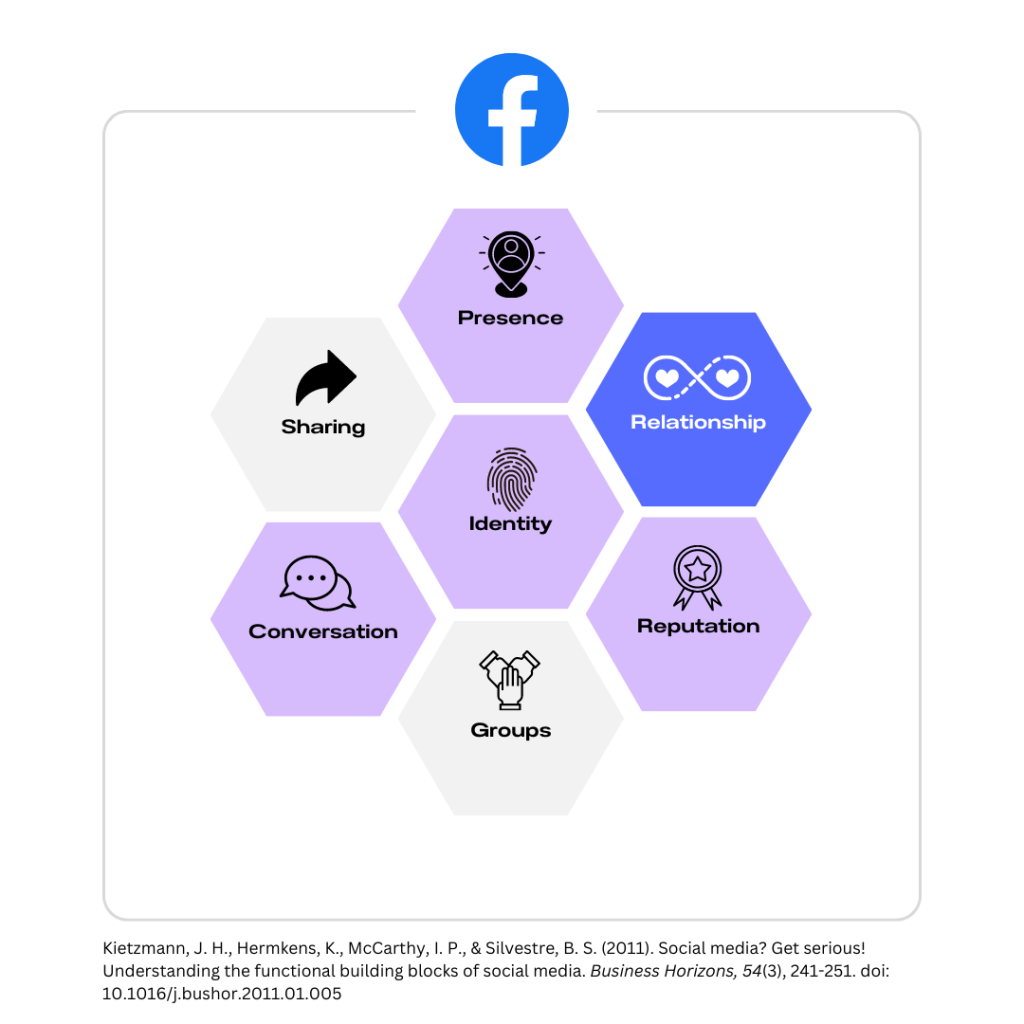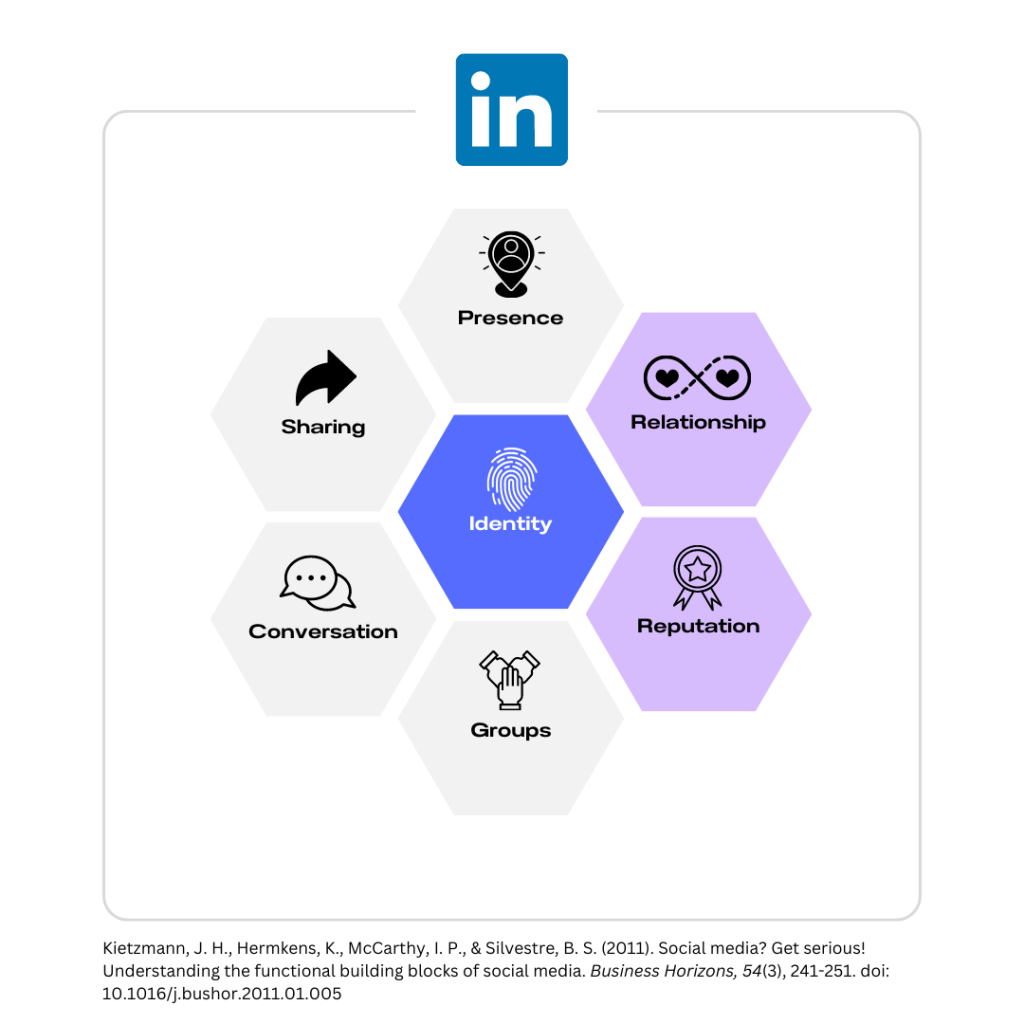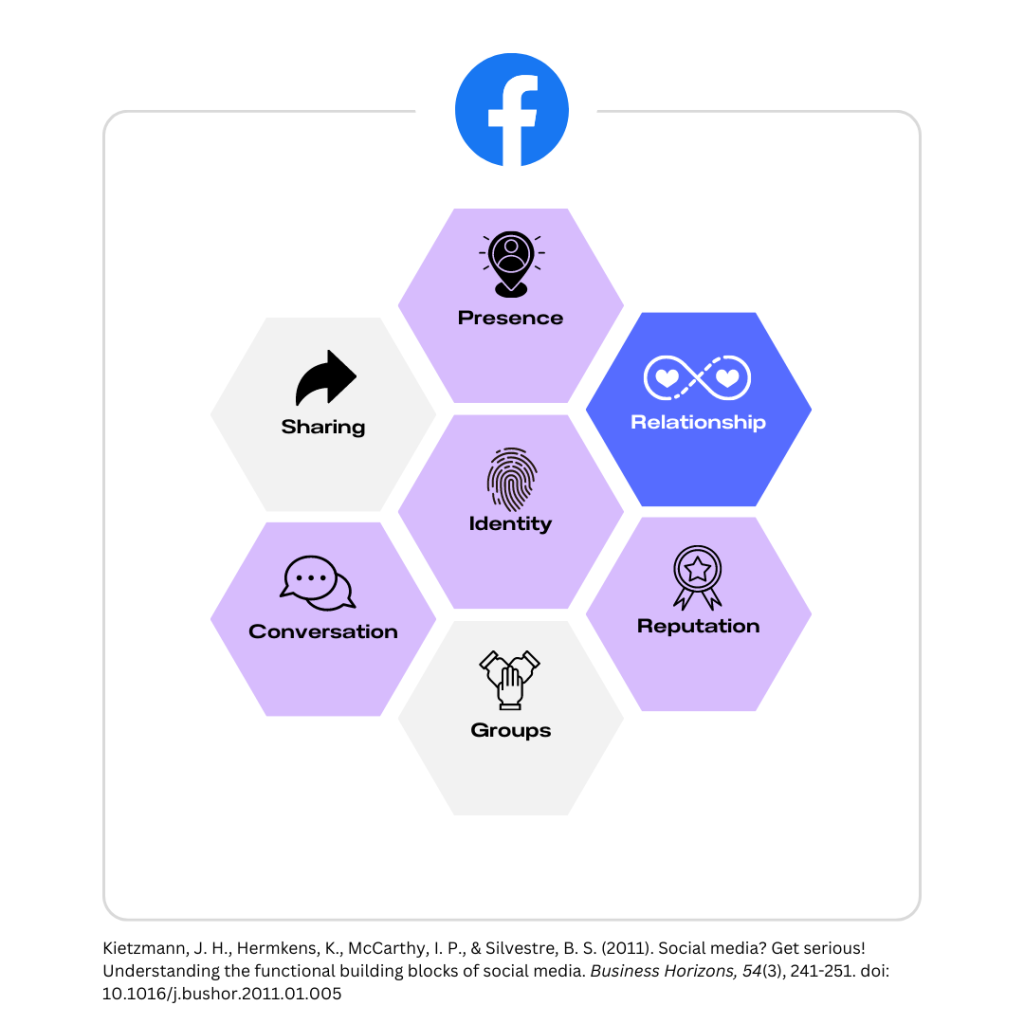While the internet’s foundations were laid in the 1960s and 1970s by computer scientists seeking to connect multiple machines, the first significant breakthrough didn’t happen until 1989. This was the year that the first web browser was released, which led to the creation of the first website on August 6, 1991.
These early static websites represented the Web 1.0 era. During this time, users mostly interacted with the web in a one-way fashion, similarly to reading a newspaper, but now, on a computer screen.
As technological advancements continued, the era of social media, or Web 2.0, emerged. During this time, web interaction evolved into two-way communication. Users not only consumed information, but they also became contributors, participating in online dialogue and content creation through tools such as comments, ratings, linking, and tagging.
In 2011, four researchers from three major universities in Canada gave birth to a study sharing seven key components of a social network, including:
(1) Identity: Users share their personal information such as name, age, occupation, viewspoints.
The pinnacle of social networking in terms of identity is none other than Linkedin. I can personally refer to my Master university as “a village school” as the city is not that crowded to what people expected about the US (which is basically New York City), but on Linkedin, it always has to be Florida State University with-proud-and-respect. 😶🌫️
(2) Conversation: Users communicate with each other.
The pinnacle of social networking in terms of conversation in Vietnam is Zalo and Facebook. While we can debate that we can talk to each other even on Tiktok, but we just can’t create polls, group chat, send a tons of multimedia types on this platform.
(3) Sharing: Users exchange, distribute, and receive content.
Specifically, users focus on sharing without the need to generate conversation or relationships, like the way I myself can post 1001 stories or photos on Instagram without hoping for a single like. Instagram or Pinterest are both social networks that aim to enhance the sharing function.
(4) Presence: Users know if others are online/available.
With the simplest example, the way Facebook displays a green circle to show that we’re online, or how we “check-in”. This component helps to enhance continuous exchange, develop more intimacy relationships.
(5) Relationships: How users connect with each other, for example: mutual friends, referrals.
On some platforms, these relationships are built systematically and professionally, like Linkedin. Facebook is a little less so. On the other hand, on platforms like Youtube or Twitter, you can completely follow anyone without the need for “stretching arms”.
(6) Reputation: Users know each other’s “social status”.
Like the way Linkedin built the “LinkedIn Top Voices” system – the most influential voices on this social network, or the “verified” system by blue tick on Tiktok and Facebook before.
As a matter of fact, reputation, on social networks, is tied to trust.
(7) Groups: Users can build large or small community groups.
In 2011 when this research was born, the researchers did not highly appreciate this component at Facebook, but only a few years later, I observed that this became a component that Facebook strongly focused on.
The research also share two takes on Facebook & Linkedin performance in 2011, which is demonstrated through the visual below with the dark purple as the unique selling point, the light purple as the strength points and the gray as the basic or not unique point. I also add two extra viewpoints based on the model for Instagram and Tiktok.
1. FACEBOOK

In my subjective assessment, by 2023, Facebook has significantly reduced its strength on
- Identity: Anonymous post in Community or the fact that I can create different identity within one account.
- Reputation: Apparently, it only costs you 12$ per month now to get the respected blue tick.
But it has heavily invested in the Groups functionality!
2. LINKEDIN

Surprisingly, even after 12 years, I still find LinkedIn keep its shape in terms of functionality.
3. TIKTOK

4. INSTAGRAM

Huge social networks like Facebook, when they do too well in the relationship-building aspect, start to encroach on other components.
Meanwhile, some other social networks like Pinterest or Twitter are still maintaining their core component as a competitive advantage, while building some “basic” features of other components to retain users.
Let’s be honest. I hate Facebook features. I don’t like not being able to bold the text I want to on this platform. I don’t like to turn on the “show online” feature. I don’t like to use my real name but would prefer a nickname like Instagram.
And while I could list on 1001 other reasons, after nearly 15 years of using Facebook, I’m still there on the platform very much due to the relationships functionality.
I just have soo-many relationships and the communities I don’t want to miss on this platform.
Some of my friends, on the other hand, have chosen not to use Facebook anymore, partly because they’re other ways to connect with their beloved, and that there are other mediums that they can develop their relationship, both online and offline.
Meanwhile, I found myself to be the kind of girl who lives on the kindness of humanity, enjoys hearing the stories of strangers, and whose eyes light up at seeing how big yet small the world is thanks to these connections. (My top 1 Strength on Strengthfinder is Connectedness!!!).
I-just-cannot (or may be, haven’t?) quit this weird Facebook.
The day I quit Facebook, will probably be the day when the world around me only revolves around me myself, or a few people who are really, really important.
Reference:
1. Kietzmann, J. H., Hermkens, K., McCarthy, I. P., & Silvestre, B. S. (2011). Social media? Get serious! Understanding the functional building blocks of social media. Business Horizons, 54(3), 241-251. https://doi.org/10.1016/j.bushor.2011.01.005
2. Fischels, J. (2021, August 6). A Look Back At The Very First Website Ever Launched, 30 Years Later. NPR. Retrieved from https://www.npr.org/2021/08/06/1025554426/a-look-back-at-the-very-first-website-ever-launched-30-years-later?fbclid=IwAR2GBx9RVf35jrRYYAUhHQzKZilQGB9JI9uQZWTWNb7yJ24NDX9WYOhh68E#:~:text=On%20August%206%2C%201991%2C%20the,about%20how%20to%20use%20it
